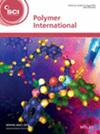求助PDF
{"title":"Non-destructive modification of cellulose-based fabrics in aqueous phase for flame-retardant epoxy composite","authors":"Liyue Zhang, Jingkai Liu, Xiaoling Liu, Jinyue Dai, Xiaoqing Liu, Xiaosu Yi","doi":"10.1002/pi.6744","DOIUrl":null,"url":null,"abstract":"<p>The flame-retardant modification of plant fiber-reinforced composites (PFRCs) is a fundamental requirement for achieving broader industrial applications. However, commonly used modification methods often compromise the fiber mechanical properties or surface reactivity due to structural damage. In this paper, a water-soluble system consisting of phytic acid imidazole salt and biobased benzoxazine was devised to modify a regenerated cellulose fabric through water-phase immersion. Benefiting from the neutral solution and self-assembly coating, the modified fabric (F-RCF) exhibited a typical self-extinguishing behavior while maintaining good structural integrity and mechanical properties. By further combining F-RCF with a DOPO-containing epoxy resin blend (FEB) to prepare a fiber-reinforced green composite (F-RCF/FEB), the results indicated that the co-curing reaction between the modifier and resin matrix contributed to improved interfacial adhesion. This enabled the simultaneous enhancement of tensile modulus (from 9.82 to 11.29 MPa), impact strength (from 6.58 to 7.26 kJ m<sup>−2</sup>) and interlaminar shear strength (from 11.41 to 13.89 MPa). More importantly, F-RCF/FEB exhibited excellent anti-flammability in terms of a high limiting oxygen index value of 34.3% and a UL-94 V-0 rating, and the peak heat release and total heat release were also markedly reduced by 44.9% and 36.9%, respectively. Mechanism analysis revealed that the modified system effectively prevented the wick effect and provided an inhibitory effect in the gaseous phase, as well as a barrier effect in the condensed phase. This study presents a non-destructive modification strategy for plant fibers, which may also inspire the synchronous enhancement of interfacial compatibility and fire-proof performance of PFRCs. © 2025 Society of Chemical Industry.</p>","PeriodicalId":20404,"journal":{"name":"Polymer International","volume":"74 6","pages":"528-537"},"PeriodicalIF":3.6000,"publicationDate":"2025-01-07","publicationTypes":"Journal Article","fieldsOfStudy":null,"isOpenAccess":false,"openAccessPdf":"","citationCount":"0","resultStr":null,"platform":"Semanticscholar","paperid":null,"PeriodicalName":"Polymer International","FirstCategoryId":"92","ListUrlMain":"https://scijournals.onlinelibrary.wiley.com/doi/10.1002/pi.6744","RegionNum":4,"RegionCategory":"化学","ArticlePicture":[],"TitleCN":null,"AbstractTextCN":null,"PMCID":null,"EPubDate":"","PubModel":"","JCR":"Q2","JCRName":"POLYMER SCIENCE","Score":null,"Total":0}
引用次数: 0
引用
批量引用
Abstract
The flame-retardant modification of plant fiber-reinforced composites (PFRCs) is a fundamental requirement for achieving broader industrial applications. However, commonly used modification methods often compromise the fiber mechanical properties or surface reactivity due to structural damage. In this paper, a water-soluble system consisting of phytic acid imidazole salt and biobased benzoxazine was devised to modify a regenerated cellulose fabric through water-phase immersion. Benefiting from the neutral solution and self-assembly coating, the modified fabric (F-RCF) exhibited a typical self-extinguishing behavior while maintaining good structural integrity and mechanical properties. By further combining F-RCF with a DOPO-containing epoxy resin blend (FEB) to prepare a fiber-reinforced green composite (F-RCF/FEB), the results indicated that the co-curing reaction between the modifier and resin matrix contributed to improved interfacial adhesion. This enabled the simultaneous enhancement of tensile modulus (from 9.82 to 11.29 MPa), impact strength (from 6.58 to 7.26 kJ m−2 ) and interlaminar shear strength (from 11.41 to 13.89 MPa). More importantly, F-RCF/FEB exhibited excellent anti-flammability in terms of a high limiting oxygen index value of 34.3% and a UL-94 V-0 rating, and the peak heat release and total heat release were also markedly reduced by 44.9% and 36.9%, respectively. Mechanism analysis revealed that the modified system effectively prevented the wick effect and provided an inhibitory effect in the gaseous phase, as well as a barrier effect in the condensed phase. This study presents a non-destructive modification strategy for plant fibers, which may also inspire the synchronous enhancement of interfacial compatibility and fire-proof performance of PFRCs. © 2025 Society of Chemical Industry.
阻燃环氧复合材料用纤维素基水相织物的无损改性
植物纤维增强复合材料(PFRCs)的阻燃改性是实现更广泛工业应用的基本要求。然而,常用的改性方法往往由于结构损伤而损害纤维的力学性能或表面反应性。本文设计了植酸咪唑盐和生物基苯并恶嗪组成的水溶性体系,通过水相浸泡对再生纤维素织物进行改性。得益于中性溶液和自组装涂层,改性织物(F-RCF)表现出典型的自熄火行为,同时保持了良好的结构完整性和机械性能。进一步将F-RCF与含dopo的环氧树脂共混物(FEB)结合制备纤维增强绿色复合材料(F-RCF/FEB),结果表明,改性剂与树脂基体之间的共固化反应有助于提高界面附着力。这使得拉伸模量(从9.82到11.29 MPa)、冲击强度(从6.58到7.26 kJ m−2)和层间剪切强度(从11.41到13.89 MPa)同时提高。更重要的是,F-RCF/FEB表现出优异的抗燃性能,极限氧指数高达34.3%,UL-94 V-0等级,峰值放热量和总放热量也分别显著降低44.9%和36.9%。机理分析表明,改性体系有效地阻止了灯芯效应,在气相中具有抑制作用,在凝聚相中具有阻隔作用。本研究提出了一种植物纤维的非破坏性改性策略,这也可能激发PFRCs界面相容性和防火性能的同步增强。©2025化学工业协会。
本文章由计算机程序翻译,如有差异,请以英文原文为准。





 求助内容:
求助内容: 应助结果提醒方式:
应助结果提醒方式:


